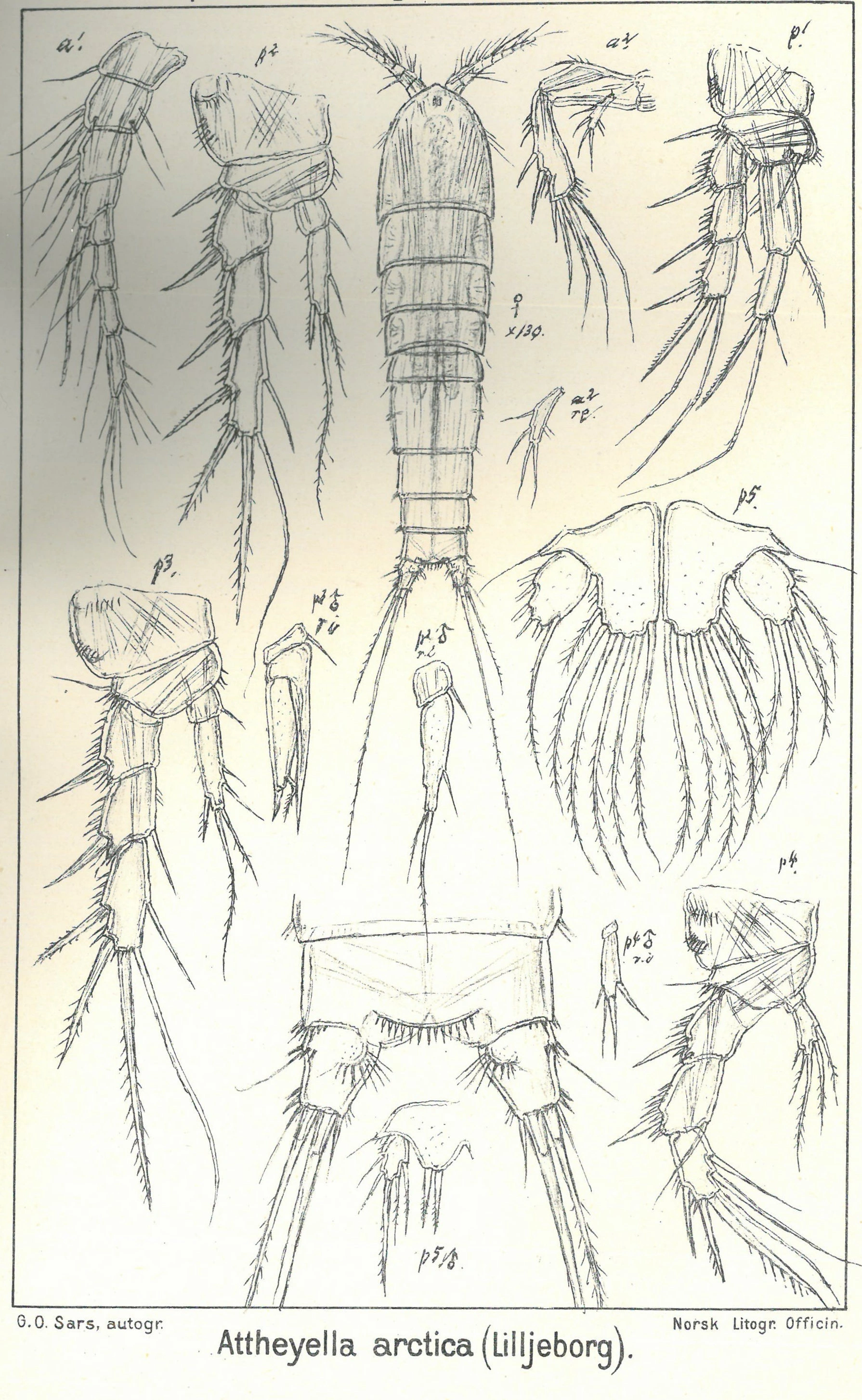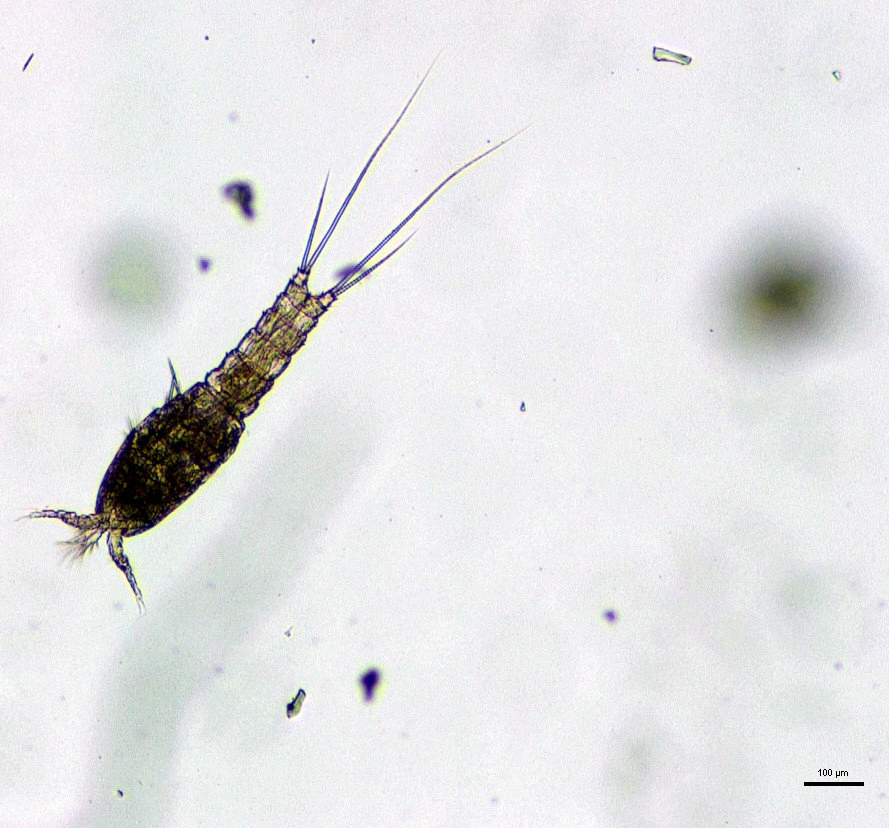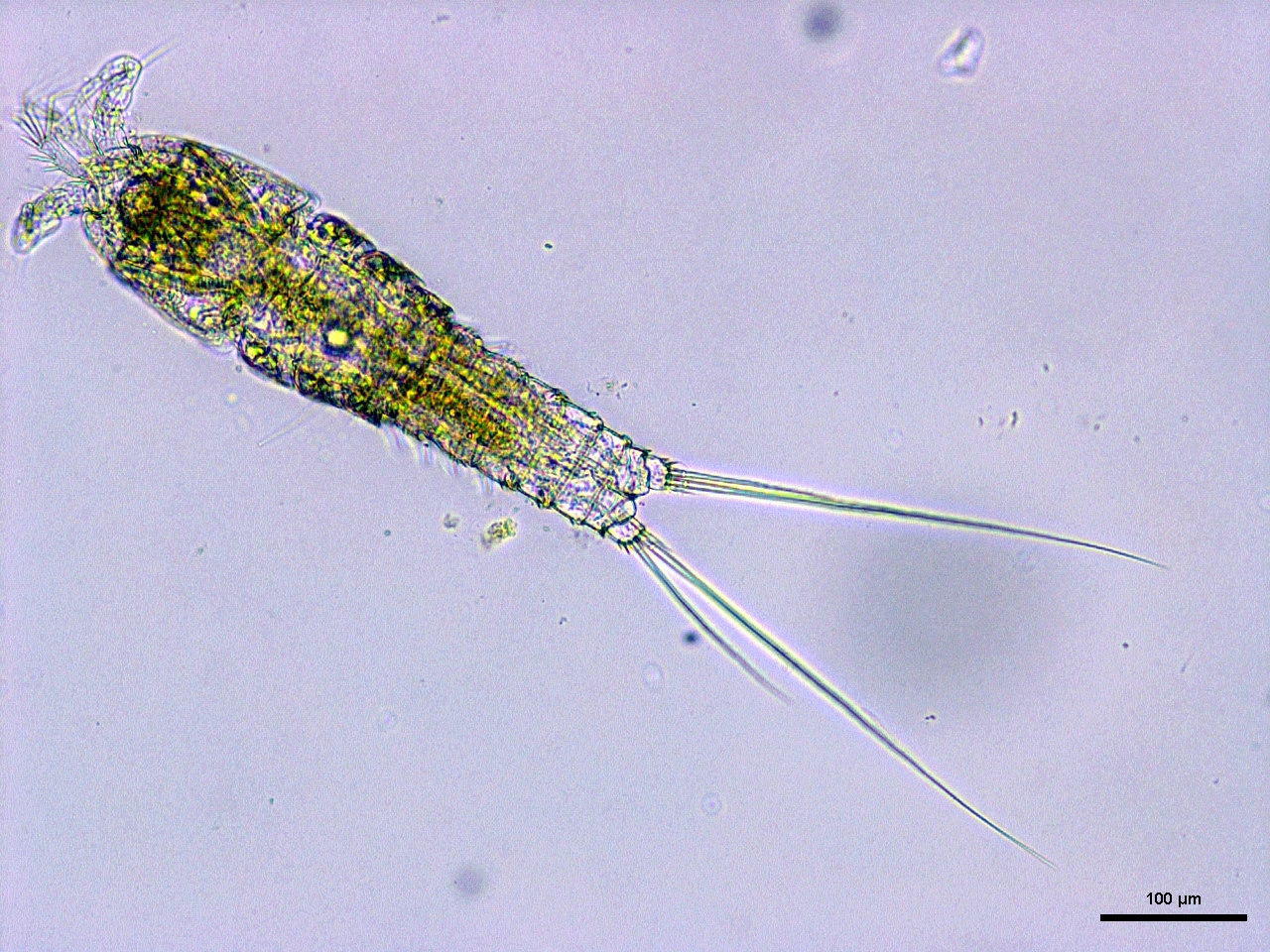Bryocamptus arcticus
Bryocamptus arcticus is a frequent species, and apart from Svalbard Archipelago, it is distributed throughout the country. The majority of records are from ponds.
Key characteristics
Bryocamptus arcticus has a rather slender body, which gradually tapers toward the urosome. The exopod in the first four legs has three segments, while the endopod is 2-segmented. In the first leg, the endopod is as long as, or slightly longer than the exopod, but for the legs 2–4, the endopod is considerably shorter than the exopod. In males, the last segment of the fourth legs' exopod is armed with a strong, comb-like structure. Its rostrum is mall. The operculum is armed with about 16 small denticles while the caudal ramus is longer than wide, broadest at the base, and tapers slightly towards the distal part. The antennule consists of eight segments. The egg sac has two eggs.
Female: Length 0.44–0.70 mm
Male: Length 0.50–0.60 mm
Ecology and distribution
Bryocamptus arcticus is typical for the Arctic, having a Palearctic and Nearctic distribution. It is often found in small waterbodies like ponds, pools, sphagnous swamps, but is also recorded from lakes. It is a littoral species found among small stones, in gravel, mud, mosses and in vegetation. The species is a cold stenotherm species, most common at high elevation.





